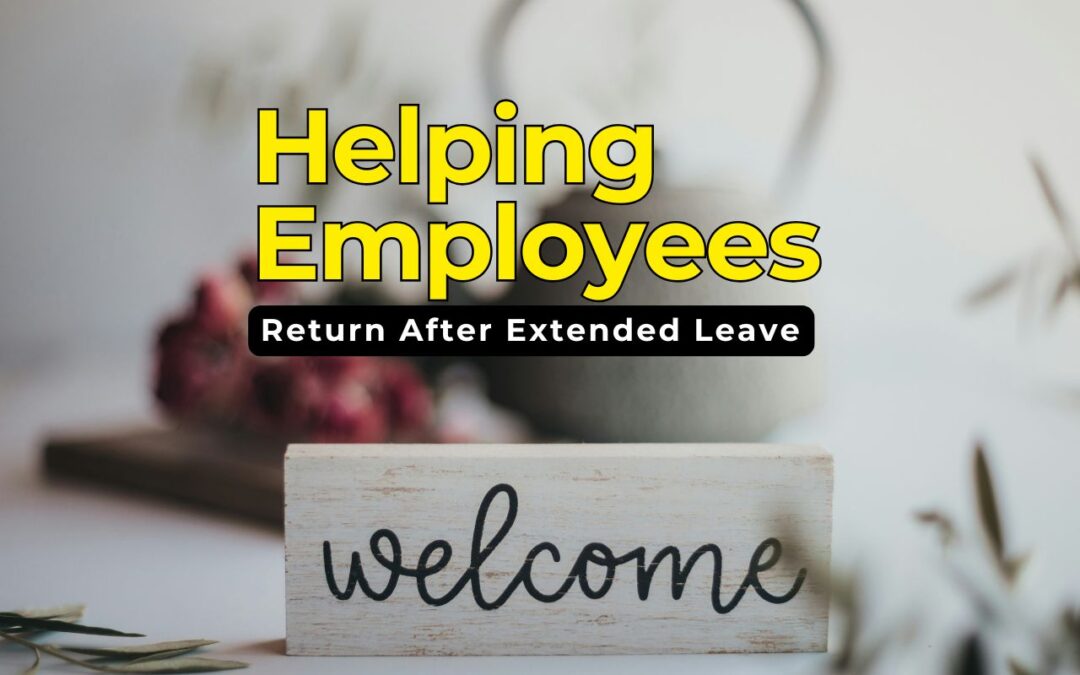Welcoming Employees Back
When returning from an extended absence, employees often feel out of touch. It’s important to make them feel welcome and valued from the get-go. A welcome-back meeting is a great opportunity to update them on any changes in the workplace and reassure them that their contributions are still valued by the team.
Returning employees are like fresh chapters in a book; they bring new energy and perspectives that can invigorate a team. Make an effort to highlight the positive aspects they bring to the table. Celebrate their return by encouraging them to share any new skills or hobbies they’ve developed during their absence. By acknowledging their unique qualities, you instill confidence and reaffirm your appreciation for their individuality.
Providing Flexibility
Be flexible with your returning employees. They need time to adapt to both the workplace changes during their absence and the personal changes that might have led to their leave. This doesn’t mean lowering the bar for performance, but rather offering a reasonable period to catch up. My own experience has shown that flexibility fosters loyalty and productivity in the long run.
It’s worth considering that every employee has their own pace when it comes to readjusting. What worked for one person may not suit another. Understanding varying personal needs and allowing employees the freedom to choose their reintegration timelines can be a powerful way to ensure no one feels pressured. An approach like this not only promotes a healthier work culture but also allows individuals to contribute effectively.
Moreover, understand that various types of leave might have different impacts on an employee’s return-to-work plan. Whether it’s an extended sabbatical or an intermittent leave of absence, each situation requires a tailored approach. Accommodating these differences demonstrates empathy and consideration for their unique circumstances.
Clear Communication is Key
It’s easy to forget someone when they’re away, but this is the best time to keep lines of communication wide open. Regular updates, on both a professional and personal level, make it easier for them to reintegrate upon returning. When I returned from my parental leave, my coworkers’ efforts to keep me in the loop made me feel connected, even when I was not physically present.
Consistent and ongoing communication helps returning employees feel part of the team from day one of their return. Encourage them to share any concerns or uncertainties they might have without fear of judgment. Regular check-ins can facilitate this exchange, offering essential reassurance and guidance. A culture where everyone’s voice is heard strengthens morale and fosters team unity, setting the stage for further successes.
Acknowledging Personal Development
Extended leaves often result from life-altering situations, and such experiences can bring significant personal growth. Encourage employees to share what they’ve learned and how it might contribute to the workplace. I found that my own time away made me more empathetic and understanding—qualities that are invaluable in my role.
Reestablishing the Routine
Reestablishing a work routine can be one of the most significant challenges employees face when they return. Work together to set reasonable goals and outline a plan to achieve them. This proactive approach can instill confidence and motivate employees to hit the ground running the moment they return.
Facilitating Team Re-Integration
Creating opportunities for returning employees to reconnect with team members is beneficial for everyone. Organize a team lunch or a casual gathering to make reintegration smoother. Even a short break for coffee can go a long way in easing the transition back into the workplace. My own reintegration was seamless thanks to small, thoughtful gestures like these.
Facilitating open dialogue among team members can further help in easing any potential anxieties or resentments that might arise. By encouraging everyone to share their thoughts and feelings freely, a more authentic and respectful relationship can develop, where misunderstandings are minimized and collaboration is heightened.
Offering Ongoing Support
Returning employees may encounter hurdles even after settling back into work. Offering ongoing support is just as important as the initial welcome back. Check in regularly to ensure they aren’t overwhelmed or facing difficulties that they feel unable to express. When I returned from my leave, my manager’s open-door policy made all the difference in maintaining my performance.
Conclusion
Successfully navigating an employee’s return from an extended leave isn’t just about ticking off checklists or holding obligatory meetings. It’s about creating a supportive environment that values their contributions and facilitates a smooth transition back. As an employer or coworker, the little things you do every day can significantly impact your colleague’s adjustment period. Welcoming returning employees with open arms leads to a happier, more productive workplace for all.













